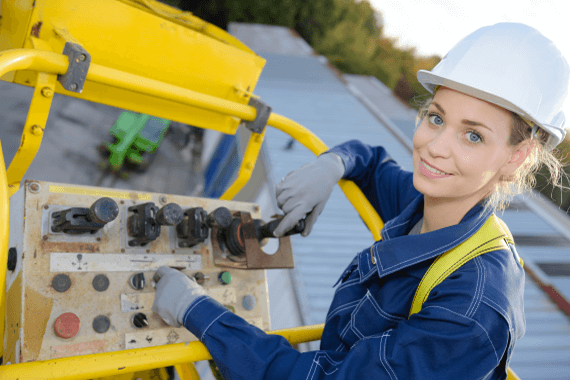- Home ››
- Online Courses ››
- Short Courses ›› Working at Height
Working at Height

The term working at height applies to a wide range of situations. These range from the obvious ones like working on platforms, ladders, scaffolds or stages, but also include situations such as working alongside deep trenches. This is because the crucial thing to understand about working at height is that it's not how far you climb, but how far you can fall.
Working at height can expose workers to particularly severe health and safety risks, and continues to be a major cause of death and serious injury. Employers have a duty to protect anyone who might be exposed to these risks by ensuring that any form of working at height is planned, supervised and carried out safely.
This online health and safety training course on working at height is made up of 11 modules and covers such issues including regulations, responsibilities, risk assessment, minimising danger and much more. It is aimed at anyone who undertakes work at height, or who employs people who regularly work at height.
There are multiple choice questions at the end of each unit. Those who successfully achieve the minimum mark required to pass these assessments are rewarded with a printable certificate.
An e-learning course is ideal for those who cannot get time away from the workplace and do not require a tailored course which deals with specific risks. If you do, then an open course or bespoke/in-house course will be much more suitable for your requirements.
The course comprises the following modules:
- Module 1: Introducing Work at Height
- Module 2: The Dangers of Work at Height
- Module 3: The Work at Height Regulations
- Module 4: Summary of Duty Holder's Responsibilities
- Module 5: Employer's Responsibilities
- Module 6: The Hierarchy of Control
- Module 7: Avoiding Work at Height Wherever Possible
- Module 8: Prevent Risk of Falls
- Module 9: Minimise Consequences
- Module 10: The Risk Assessment
- Module 11: Course Summary
Single Licence

Individuals looking to take the Working at Height online course can purchase a single user license for £15.00 + vat. This license grants unlimited access to the course, with no time restrictions, for one user only.
Please click the link below to complete the booking form and payment online.
Once we have received this we will set-up your access to the course within 24-48 hours, and e-mail you your log-in details to the address provided on the booking form.
Buy Single LicenceMultiple Licences for Businesses

If you are a business or organisation and have a number of employees that you would like to take the Working at Height online course, we offer discounts for multiple purchases, with a greater discount amount available the more courses that are purchased.
Purchasing a business license will grant the buyer administration access from where they can issue log-in usernames and passwords to their employees. This allows businesses to take advantage of the greater discounts on offer even if they do not currently know the names of every individual who will be taking the online course, which is particularly useful if you plan to grant access to employees over a period of time rather than all at once (e.g. getting new starters to complete the course). It also negates the need to fill in a massively long booking form with all their names when purchasing!
The pricing and discount structure available for mutiple purchases of this course is currently:
- 2-9 Licenses: £14.00 + vat each
- 10-49 Licenses: £13.50 + vat each
- 50-99 Licenses: £13.00 + vat each
- 100+ Licenses: Contact us for a custom quote
Unlimited Usage Subscription

Take the hassle out of sourcing individual training courses by giving your employees unlimited access to all 114 online video courses (click here to view all titles) with an annual subscription.
- The convenience of training anywhere with an internet connection
- Keep knowledge up to date and learn new skills
- You allocate users, giving you full control and flexibility
- Ability to monitor each individual’s progress and check course completion
- Make a one-off payment or pay by monthly instalments
| Users | Monthly Cost | Buy Now |
|---|---|---|
| 1-10 | £150 + vat | Buy Now |
| 11-25 | £250 + vat | Buy Now |
| 26-50 | £350 + vat | Buy Now |
| 51-100 | £450 + vat | Buy Now |
| 101-250 | £800 + vat | Buy Now |
| 251-500 | £1,200 + vat | Buy Now |
| 501-750 | £1,500 + vat | Buy Now |
| 751-1,000 | £1,900 + vat | Buy Now |
| 1,001-2,500 | £3,400 + vat | Buy Now |
| 2,501-5,000 | £4,500 + vat | Buy Now |





